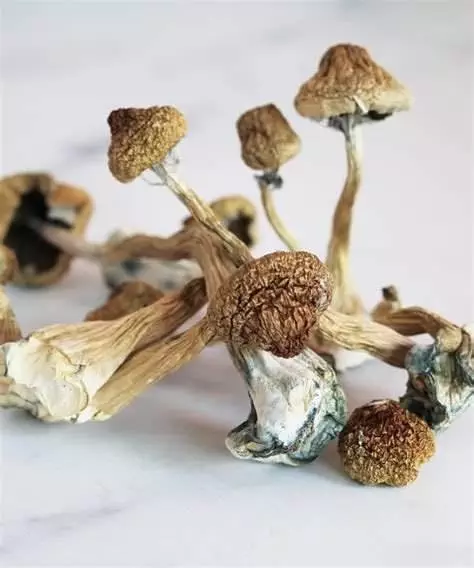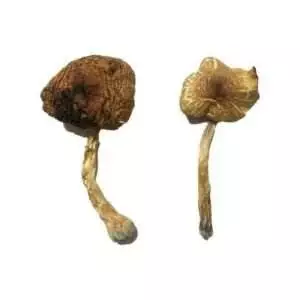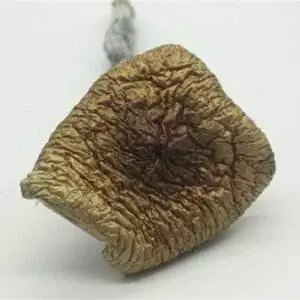Description of Psilocybe Azurescens
Pileas: The cap (pileus) of Psilocybe azurescens is 30–100 millimeters in diameter, conic to convex, expanding to broadly convex and ultimately flattening with age employing a conspicuous, long-term broad umbo; surface smooth, viscous when moist, coated by a separable gelatinous pellicle; chestnut to ochraceous brown to caramel in color, often becoming entangled with dark blue or bluish-black zones, hygrophanous, fading to light straw color in drying, ardently bruising blue when broken; margin, occasionally jagged and irregular at maturity, slightly incurved at first, soon decurved, flattening with maturity, translucent striate and frequently leaving a fibrillose annular zone at the upper areas of the stipe. Gills: The lamellae are ascending, sinuate to adnate, brown, frequently stained into black where harm, near, with two tiers of lamellulae, mottled, borders.
Stipe: The stipe is 90–200 millimeters in length and 3–6 mm thick, glistening white, dingy brown from the foundation or, in the era, hollow at maturity, also composed of twisted, cartilaginous tissue. The bottom of the stipe thickens downwards, is frequently curved, and is distinguished by demanding white aerial tufts of mycelium, frequently with blue tones.
Taste of Psilocybe Azurescens: Exceptionally bitter
odorless to farinaceous
Habitat?
P. azurescens occurs naturally along a small area of the West Coast of the United States, such as Oregon and California. It’s been frequently seen as far south as Depoe Bay, Oregon, north as Grays Harbor County, Washington.
Its central locations are clustered across the Columbia River Delta: the first kind of sets was created at Hammond, Oregon, near Astoria. It’s also quite prevalent north of the Columbia River in Washington, from Long Beach north to Westport. Some feral specimens also have been reported from Stuttgart, Germany.
While uncommon, the mushroom can occasionally be found around decaying timber at the Willamette Valley of Oregon. Ilwaco, Washington also comprises a massive population; nevertheless, harvesting is a possible felony enforced by local law enforcement agencies.
The species’ favorite environment ranges from caespitose (growing in tight( split clusters) into gregarious on deciduous wood-chips or in aquatic lands filled with lignicolous (woody) debris. In reality, it creates a comprehensive, compact, and tenacious mycelial mat (collyboid).
P. azurescens induces the bleaching of timber. Fruitings start in late September and last until” late December and early January,” based on mycologist Paul Stamets. Psilocybe azurescens was cultivated in Many countries such as Germany,
The Netherlands, New Zealand, the UK, and its own native United States (especially in California, New Mexico, Ohio, Oregon, Washington, Vermont, Wisconsin, along with Pennsylvania).






Reviews
There are no reviews yet.